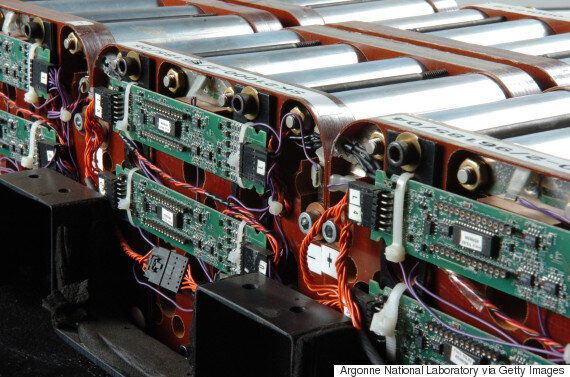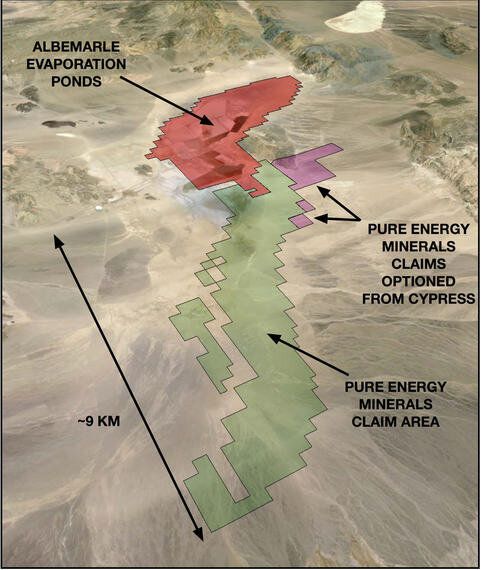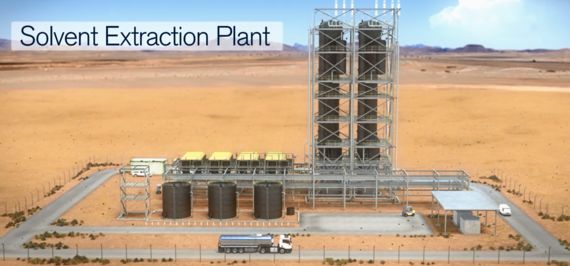
Green renewable energy has finally come of age.
Thanks to the United Nations' recent Paris Agreement, its speedy integration is being mandated by governments throughout the industrialized world.
But the challenge still remains to make it significantly more affordable to encourage mass adoption at a consumer level.
Now a small Canadian start-up is developing a novel technological breakthrough to help solve this pressing problem. In fact, Vancouver-headquartered Pure Energy Minerals (TSX.V: PE) (US OTCQB: PEMIF) aims to play a key role in making the electrification of our energy supplies affordable.
It's an ambitious mandate. And it involves the pioneering an entirely new, environmentally conscious form of lithium mining and processing at the heart of lithium-rich Nevada.
Not surprisingly, it has already attracted the attention of one high-profile electric vehicle manufacturer: Tesla Motors signed a conditional supply agreement with Pure Energy in September 2015.
The company's deposit is also right next door to North America's only lithium mine (as shown below) in the arid Clayton Valley. This is half way between Reno and Las Vegas and is also just a 3.5-hour drive from Tesla's in-development "giga-factory."

Remember that lithium-ion batteries are being championed around the world as a catalyst for a greener society. Admittedly, their most disruptive use to date has been in their ongoing transformation of the automobile industry, especially in China.
Truth be told, there are much bigger applications on the way. For instance, the ability to store electricity generated by solar energy and wind power has long been the Holy Grail of renewable energy. And now it is finally possible thanks to the cost-effective scalability of lithium-ion battery packs.
The advent of "smart" buildings that can access uninterrupted, self-generated energy supplies literally makes them their own power plants. A good example can be found with Tesla's "Powerwall" -- a battery pack that stores energy generated by rooftop solar panels.
Consequently, demand for lithium is growing at an exponential rate that is already destined to outstrip existing supplies within the next few years, according to industry analysts.
This is why Pure Energy's business model appears to have a viable future. Also, the company has a commitment to sustainable mining practices. Second, it offers the prospect of far greater production efficiencies (translating into cost savings) and an expedited timeline to cash flow.
Why the Reinvention of Lithium Mining Matters
Traditional lithium mining involves depositing lithium brine that's pumped out of the ground into a series of expansive shallow concentration ponds. This is where the sun's heat concentrates the lithium salts until they are ready for extraction at a nearby recovery plant. This whole process typically takes 18 months to two years.
Yet this old form of lithium brine mining is fraught with environmental hazards. For instance, it can harm any wildlife that comes into contact with concentration ponds. And the waste salt can become airborne, thereby polluting the air.
Worse still, it involves intensive water usage, as well as protracted and wasteful production inefficiencies. Frankly, it's a drawn-out, low-tech process that hasn't changed in decades.
However, new technology would dramatically reduce the need for large amounts of water and would eliminate any need for evaporation ponds. It even conserves water because there is no loss to evaporation, and it keeps the lithium concentration from being exposed to the environment. This is likely to accelerate the company's permitting process.
Executing at a Higher Level
In essence, new processing/extraction systems will turn raw lithium brine into high-purity, battery-grade lithium hydroxide. Significantly, this facilitates delivery to market in days, instead of months.
It's worth noting that this technology has been developed by Tenova Bateman Technologies (TBT) -- a global leader in innovating mineral extraction and separation processes. In fact, extensive proof-of-concept testing has just been successfully completed at a mini pilot plant.

According to Pure Energy's CEO, Patrick Highsmith, "This technology is likely to be a true game-changer. In fact, lithium recovery from the brines could show gains of 60 to 100 per cent over existing technology."
"We'll also be conserving water, saving wildlife, and we won't be having a negative impact on the air quality either," he adds.
Additionally, Pure Energy is focused on minimizing start-up and operational costs. On this note, estimates from TBT suggest that capital and operating costs should be comparable or even superior to existing technology.
Furthermore, the shorter lead times to production paves the way for a faster payback -- a key value driver in an industry where paybacks typically take between five to 10 years.
Leading the Race to Market
Whether tomorrow's green battery manufacturers flourish or falter depends on two key dynamics -- these batteries have to be produced cost-efficiently, and there has to be a steady and sizeable supply of raw lithium.
It's a daunting challenge. Globally, there are very few lithium mines. Nevada's sole producer is the Silver Peak Mine, owned by the US chemical company Albemarle Corporation. And it can only supply a tiny fraction of the world's burgeoning lithium needs.
However, Albemarle is one of four companies that operate as an oligopoly by controlling close to 90 per cent of the world's current supply. They dictate price. Yet, they have been unwilling to bring significant new production to market.
This is why Pure Energy is racing to bring its own mine into production, and it is well ahead of other brine exploration/development companies in North America. Later this year, it plans to announce a "preliminary economic assessment" of its sizeable 816,000-tonne lithium brine deposit -- an initial blueprint for a mine.
"Achieving this important milestone should boost our credibility as a serious player in the race to commercialize new lithium production right here in America," Highsmith says.
"And new, cleaner, more efficient 21st century lithium mines are needed to spearhead the mass adoption of clean, sustainable energy."
Follow HuffPost Canada Blogs on Facebook
Also on HuffPost:
